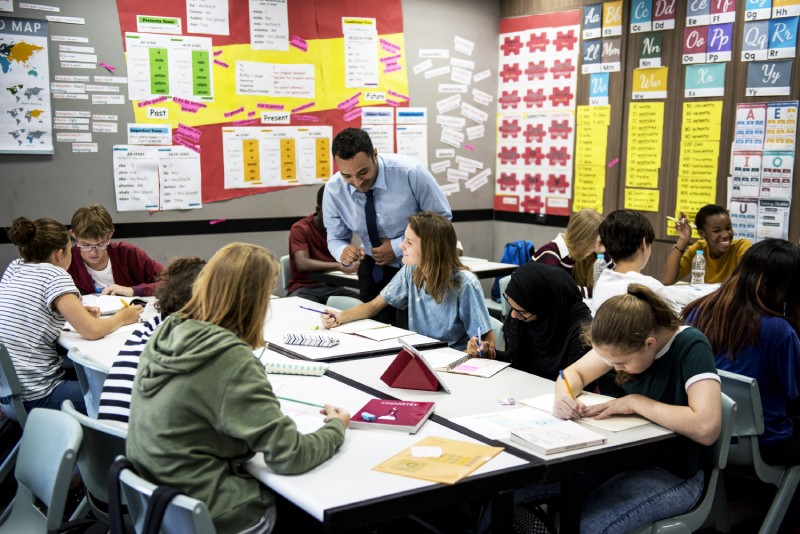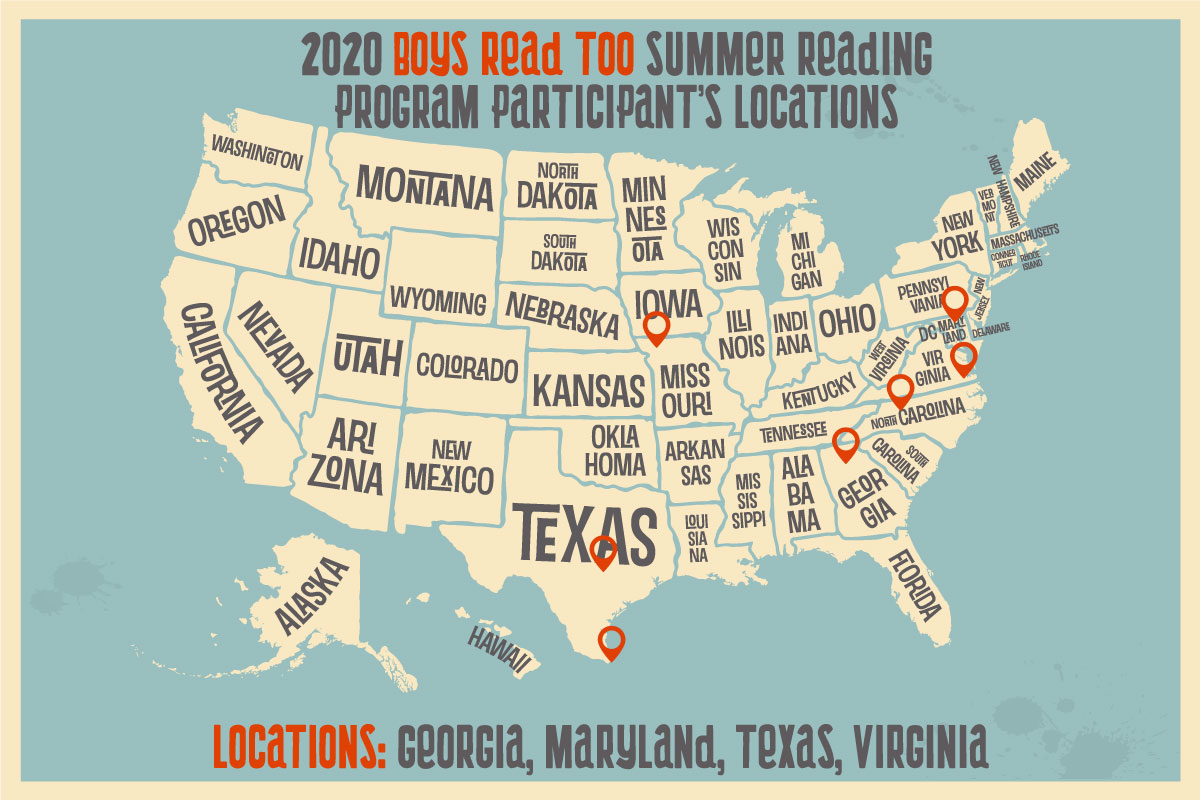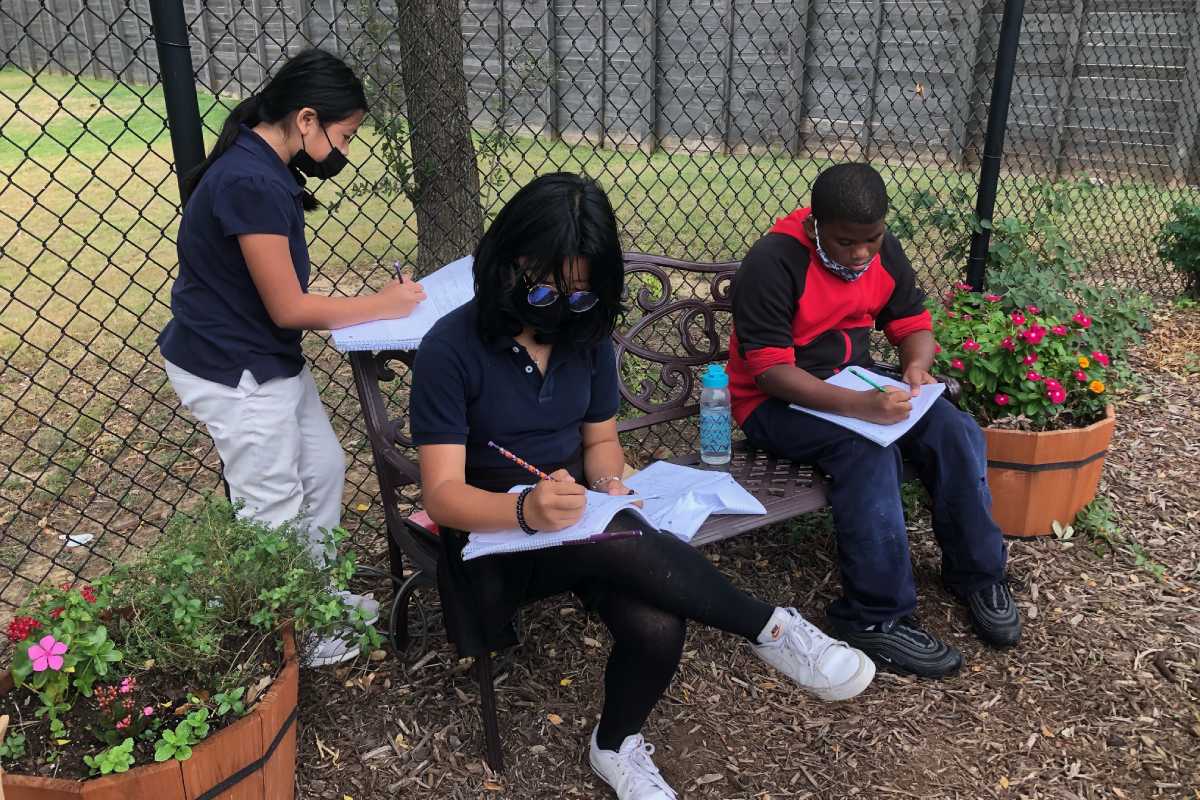Creating Literacy Peace: All Text is Important for Developing Readers

Reading is a complex, unnatural process, and it stands to reason that teaching it would be equally complex. As literacy educators and authors, we look forward to reading the latest research and exploring new ideas. Likewise, we see many blog posts, tweets, and other social media postings which claim to identify THE best way to teach reading: in small groups or whole groups, by focusing on phonics or whole language, or by providing students with instructional level texts or complex texts? For example, research has made it very clear that explicit phonics instruction is a must (Castles, Rastle, & & Nation, 2018). That doesn’t mean we abandon exposing children to books and decodables while teaching them phonics skills. Students need to see these phonic rules in texts for transfer to occur. They need: skills and exposure to books. Rather than create a war over the best method by attacking other experts and educators, let’s consider some of the research, pay attention to what we observe in our own classrooms, and agree to make peace.
Most of us who work with K-12 learners recognize that the answer is: Surprise! There is no one best way to teach reading. Our experience indicates that a combination – or balance – of strategies and methods produce the best results. As Myracle, Kingsley, and McClellan (2019) summarized in their inspired opinion piece for EdWeek, the 2000 National Reading Panel Report was right all along: literacy work is a both/and, not an either/or. Regardless of their preferred literacy strategy or method, we’ve never met an educator that didn’t think this discussion was important. The following statistics are alarming and demand our attention:
- Reading scores have been flat lined since 1998 in our country with just a third or so of students performing at a level the NAEP defines as proficient. Reading progress from this NAEP test shows no growth in 30 years. Two out of three children did not meet the standards for reading proficiency set by the NAEP. Only 35% of fourth graders were proficient in reading in 2019, down from 37% in 2017. Thirty-four percent of eighth graders were proficient in reading, down from 36% (U.S. Department of Education, 2019).
- 78% of 4th graders living in low-incomes homes scored below the proficient level in reading compared to the 48% of children in moderate and high-income homes (Casey Foundation, 2019).
- The great majority of students who fail to master reading by 3rd grade either drop out or finish high school with dismal lifetime earning potentials (Casey Foundation, 2010).
- ELA Common Core architects found that one-third of our 8th graders are on track
for the literacy demands of college literacy skills (Common Core State Standards, 2010). - The ELA proficiency is even lower for minorities and students living in poverty (Duncan & Murname, 2011).
Teachers see evidence of this crisis every day in their classrooms. This exerts enormous pressure for students to perform on high stakes testing and creates panicked and desperate teachers trying to find the best course of action to develop students’ reading skills. And in their desperation, it’s only natural that all stakeholders, parents, teachers, and communities, want to simplify. We all care about our students. We want one right answer, one simple solution, one best way – and we want to move quickly. Unfortunately, as is true in so many aspects of life right now, in our haste and panic we sometimes find ourselves vilifying researchers and theorists that disagree with our chosen ‘quick fix.’ That is not our intention. High student literacy is the focus and will remain as the main concern for what we share.

The Rigor vs. Comfort Debate: Text Choices
While we can’t speak for every single teacher, curriculum director, or reading coach the educators that we’ve worked with recognize this truth: each student, every day, needs several hours of authentic reading in order to grow into strategic learners. Anderson, Wilson and Fielding (1998) found the relationships between time spent reading and reading scores to be directly correlated. In order to develop proficiency, children need a high volume of reading practice combined with feedback and goal setting (Anderson, Wilson & Fielding, 1988). The research supports what teachers have observed in their students and schools. This research aligns with what we’ve all seen with our own students in our own schools.
The argument isn’t about the amount of time students should spend reading. Rather, current debate center around whether it’s of greater benefit to students to improve reading and comprehension skills by engaging with challenging text that is well above their comfort level, or whether they should be encouraged to build stamina and fluency by reading texts that are at or only slightly above their reading level. There is reason to believe that increasing the rigor by exposing students to challenging texts is “a” way to go. Let’s take a look at some of the research.
There is ample evidence to demonstrate the steady decline in the difficulty of texts students have been asked to read in school. This includes research results from Hayes, Wolfer, and Wolfe (1996), whose study compared contemporary reading textbooks to those used from 1946 to 1962. They documented a steep decline both in average sentence length and vocabulary (Hayes, Wolfer, & Wolfe, 1996). Furthermore, Jeanne Chall and her colleagues documented a thirteen-year decrease in the difficulty of grade 1, grade 6, and grade 11 texts between 1963 and 1977 (Chall, Conrad, & Harris, 1977). The decline in student reading ability parallels a decline in their exposure to challenging texts. Therefore, it’s not unreasonable to conclude that there might be a connection.
The ACT Inc, released a report in 2006, Reading Between the Lines, that showed which skills produced the highest ACT score. A score of 21 places a student in the top 57th percentile nationally out of the 2 million test takers of the ACT entrance exam compared to those who did not, could answer questions associated with complex texts (the research held true no matter the gender, socio-economic level, race, ethnicity, etc.). Reading complex texts was a top tool to prepare students to read at the college level. Comprehending complex texts, defined by literacy researcher, Elfrieda Hiebert (2012) as texts with “complex ideas conveyed with rare and infrequent vocabulary,” is one of the best ways to help students: to develop mature language skills, to think deeply about vocabulary in context, to critically think about what an author has written, to create meaning with challenging concepts, and to learn conceptual knowledge they need for success in school and beyond (Hiebert, 2012). Furthermore, recent research indicated “that weaker readers, using texts at two, three and four grade levels above their instructional levels with the assistance of leader readers (other better reading third graders), outscored both proficient and less proficient students in the control group across multiple measures of reading achievement” (Brown, Mohr, Wilcox, & Barrett, 2018). When students overcome appropriate challenging tasks, they can experience a strong self-efficacy, sense of accomplishment, and addictive, intrinsic motivation that makes them want to do it again (Cash, 2016).

Cognitive science has determined that challenge is good for the brain: both the slight struggle and the frustration level struggle. Dr. Marian Diamond’s (1988; 1999) seminal research showed that when a brain is challenged and in an enriched environment, the brain cells thrive and branch out to produce more connections. Other research suggests that when students put forth great effort to understand information and learn it, they actually can recall it much better. Psychologists performed this research by having one group of students read difficult material in unfamiliar fonts and another group read the same article with conventional, familiar fonts. They found that the students who read the difficult material in unfamiliar fonts actually learned the content from the article more deeply than the latter group. This phenomenon is called cognitive disfluency. They also created passages with punctuation mistakes, deliberately leaving out letters, shrinking the font size, and making the page blurry to challenge the reader. Same results. The researchers showed that “making material harder to learn can improve long-term learning and retention. More cognitive engagement leads to deeper processing, which facilitates encoding and subsequently better retrieval” (Diemand-Yauman & Oppenheimer, 2011). And yet, research documents that the best predictors of reading achievement (among 13 countries) are enjoyment and interest (Lee, 2014).
What about the advantages of allowing students to read texts of their own choosing, texts that they’re comfortable with – that they understand and that reflect their own experiences and interests? Won’t these experiences encourage them to develop stamina and a life-long love of reading? There’s plenty of evidence that indicates that is a more valuable strategy.
When Richard Allington and Rachael Gabriel (2012) narrowed down the Six Common Factors That Lead to School Success and Student Growth, their first three factors referenced exactly this type of reading:
- Every child reads something he or she chooses.
- Every child reads accurately.
- Every child reads something he or she understands.
Research by O’Connor, Bel, Harty, Larkin, Sackor, and Zigmond (2002) determined that greater fluency growth was found with struggling sixth-grade readers when they were provided with texts they could read accurately versus when they were provided tutoring in the texts used in the classroom. “Across groups,” they found, “fluency was the strongest contributor to reading comprehension.” They concluded, “Our results suggest that students with very low fluency will not improve their reading ability if they are taught with grade-level materials”
It’s not surprising that educators find themselves caught in the middle. There is reliable research on both sides of the debate. So then how do educators decide what to do in our own schools? Educators can combine approaches by:
- Giving students an opportunity to engage with difficult texts (grade level or above; complex text) during shared reading time.
- Encouraging them to build reading accuracy, fluency, and comprehension (not to mention any reading struggles that they need support with) during guided reading (small group time).
- Build stamina and a love of reading with texts of their own choosing during partner-read and independent reading time.
Our experience shows that, if done thoughtfully, this “integrated way” produces the best results.

Increase the Rigor – But Do It Thoughtfully
Repeatedly subjecting student readers to frustration-level texts, without proper scaffolding and guidance, results in nothing but difficulty. To get the most out of instructional reading, educators have to offer guidance in specific comprehension strategies, consider students’ background knowledge, and be able to offer a variety of challenging texts to address a range of needs.
No one, however, is claiming that just placing kids in harder books leads to greater learning – clearly harder books require instructional adjustments by teachers that are an important part of the equation. Exposing kids to grade level text will not automatically raise student learning. It just provides an opportunity for greater learning. Instructional techniques – like the dyadic reading in this study – are an example of that kind of instructional adjustment. Additional guidance with vocabulary, grammar, cohesion, structure and other aspects of text complexity should have their place too” (Shanahan, 2017).
Further complicating things is the fact that effective reading does not only focus on the specific components (phonemic awareness, comprehension, phonics, fluency, and vocabulary). Comprehension is also highly connected to students’ background knowledge or schema. A student’s background knowledge strongly impacts their ability to comprehend a specific text. This is true of even the most fluent adult readers. All text presents gaps that the reader needs to fill in, and they do so based on prior experience. For example, the more a reader knows about “soccer” the better they can comprehend what a book or article about soccer is truly saying. Dr. Willingham’s research documents the impact background knowledge has on comprehension. in one of his experiments third graders, who were identified as “poor readers” by a reading test poor scored better than the higher-level readers when asked to read a passage on a familiar topic. For example, when students were asked to read a passage about soccer, the poor readers who knew a lot about soccer were three times as likely to make accurate inferences about the passage as the good readers who didn’t know much about the game. This research suggests that students who score well on reading tests are those with broad knowledge and usually know something about the topic in the passages on the test (Willingham, 2017).
Finally, it’s important to remember that instructional level text for one child may be extreme frustration level text for another. According to most state standards, we’re required to expose all students to grade level texts or above. But what do we do about students who read at significantly above- or below-grade level? We differentiate texts. This means we must have a systematic approach to planning curriculum and instruction for diverse learners. Teachers and curriculum directors use this approach to maximize students’ learning capacity while being cognizant of their individual needs. Differentiated instruction through small group guided reading or one-to-one conferencing allows us to better meet the needs of our students which can happen in guided reading time during conferencing (Nickelsen & Dickson, 2019)..
The demands of effective, instructional classroom reading exposes the great weakness of most “purchased” literacy programs. Literacy programs that promise great results and high student achievement are not able to replace actual instruction, can’t adequately address gaps in background knowledge and aren’t usually designed to reach students of varying abilities. Consequently, they must be viewed for what they actually are: resources – no more and no less. While it’s tempting to succumb to their false promises, pre-packaged programs are not a substitute for thoughtful curricula and targeted teaching strategies.
At-Level Texts and Student Choice
In much the same way, giving students a chance to independently read texts that they are able to fully understand and read fluently, requires thoughtful preparation on the part of the district, the school, and the individual teacher. Studies have noted the correlation between reading fluency and comprehension. It is for this reason that one critical component of state reading assessments gathers data on students’ ability to read with fluency. Let’s think about how fluency is fully defined. In general, a fluent reader is able to gauge the meaning, rate, intonation, expression, appropriate stress and pausing, as guided by the author’s word choice, sentence structure, and punctuation. Reading a text at the instructional level – let alone at the frustration level does not improve fluency. Rather, fluency is developed when a student reads texts that match their readiness levels. The more time they spend reading these “just right” books, the more fluent they become.
What is the best way to motivate reluctant readers and encourage all readers to spend time reading? Give them a choice in their reading material. As Allington and Gabriel’s (2012) findings assert, students need practice and choice in order to develop greater skill proficiency. Jeffery Wilhelm, Michael Smith, and Sharon Fransen (2014) arrived at similar conclusions about the importance of choice and practice. Giving students a choice in reading material often makes teachers unnecessarily nervous. As with choosing texts for guided reading, the practice of selecting text options for independent reading requires intentionality. Student choice does not mean a “free-for-all”. In fact, experienced teachers often refer to this practice as a “democratic dictatorship.” Teachers offer students choices but let them select from options that the teacher has vetted. In short, in order to improve student fluency, effective teachers give them a choice of texts that are at or very slightly above their comfort level. In this way, students grow their independence by becoming partners in a differentiated learning environment. There are tested classroom models like the Literacy & Learning Center Instructional Model (McKnight, 2020) that allows teachers to save time and effort by incorporating student choice while simultaneously covering content and skill development. The practice of student choice and differentiated reading also requires some thought, commitment, and preparation on the part of school leaders. This allows teachers to offer students choice. Districts then must ensure that schools have a wide range of texts in classrooms and libraries for student use.
For teachers to be able to offer their students choices for reading, districts must ensure that schools have access to a range of texts on various topics. This doesn’t require a huge investment in expensive textbooks. Reading options can be found online, in periodicals, in paperback “trade” publications, and in the books and texts that are already in each school’s classrooms and libraries.

Making Peace with the Reading Wars
As highly as we value the research and insight offered by conflicting studies, it’s important to remember that there is nothing simple about the act of reading. Therefore, there is no reason to believe that there should be one simple way to teach students how to excel at it. As educators, we have an obligation to be research informed and adjust instructional practices accordingly. Our students’ learning is paramount and sometimes, that may necessitate that we incorporate practices from both sides of the reading wars. Specifically, increasing rigor and exposing student readers to complex, challenging, and grade-level texts, and teaching the strategies that they’ll need in order to eventually read these texts independently. It also means encouraging every student to increase their fluency by reading lots of “just right” text. Figuring out effective ways to combine the two approaches is a better use of our time than continuing to engage in and polarizing reading wars.
Allington, R., & & Gabriel, R. (2012). Every child, every day. Educational Leadership, 10-15.
Anderson, R. W. (1988). Growth in reading and how children spend thier time outisde of school. Reading Research Quarterly, 285-303.
Brown, L., Mohr, K., Wilcox, B., & Barrett, T. (2018). the effects of dyad reading and text difficulty on third-graers’ reading achievement. Journal of Educational Research, 541-553.
Cash, R. (2016). Self-regulation in the classroom: Helping students learn how to learn. Minneapolis: Free Spirit.
Castles, A., Rastle, K., & & Nation, K. (2018). Ending the reading wars: Reading aquisition from novice to expert. Psychological Science in the Public Interest, 5-51.
Chall, J., Conrad, S., & Harris, S. (1977). An analysis of textbooks in relation to declining SAT scores. Princeton, NJ: College Entrance Examination Board.
Diamond, M. &. (1999). Magic trees of the mind: how to nuture your child’s intelligence, creativity, and healthy emotions from birth through adolescence. Penguin.
Diamond, M. C. (1988). Enriching heredity: the impact of the environment on the anatomy of the brain. Free Press.
Diemand-Yauman, C., & Oppenheimer, D. V. (2011). Fortune favors the (): Effects of disfluency on educational outcomes. Cognition, 111-115.
Duncan, G. &. (2011). Wither opportunity? Rising inequality, schools and children’s life chances. Russell Sage Foundation.
Early warning! Why reading by the end of third grade matters: A kids count special report on the importance of reading by 3rd grade. (2010). Retrieved from Annie E. Casey Foundation: https://www.aecf.org/resources/early-warning-why-reading-by-the-end-of-third-grade-matters/
Education, U. D. (2019). Results from the 2019 mathematics and reading assessments. Retrieved from https://www.nationsreportcard.gov/mathematics/supportive_files/2019_infographic.pdf
Hayes, D., Wolfer, L., & & Wolfe, M. (1996). Sourcebook simplification and its relation to the decline in SAT verbal scores. American Educational Research Journal, 489-508.
Herbert, E. (2012). The common core state standards and text complexity. In M. &. Hougen, Fundamentals of literacy instruction and assessment, pre-K-6. Baltimore: Paul Brookes Publishing.
Kids count data book. (2019). Retrieved from Annie E. Casey Foundation: https://www.aecf.org/m/resourcedoc/aecf-2019kidscountdatabook-2019.pdf
Lee, J. (2014). Universal factors of student achievement in high-performing Eastern and Western countries. Journal of Educational Psychology, 364-368.
McKnight, K. (2019). Literacy & learning centers for the big kids: Building literacy skills and content knowledge for grades 4-12, Second Edition. Engaging Learners.
Myracle, J., Kingsley, B., & & McClellan, R. (2019, November 18). We have a national reading crisis. Retrieved from EdWeek: https://www.edweek.org/ew/articles/2019/03/07/we-have-a-national-reading-crisis.html
National Governors Association Center for Best Practices, C. o. (2010). Common core state standards: English language arts. Washington, D.C.: National Governors Association Center for Best Practices.
Nickelsen, LeAnn and Dickson, Melissa (2019). Teaching with the instructional cha-chas: Four steps that make learning stick. Bloomington, IN: Solution Tree.
Oconnor, R. E. (2002). Teaching reading to poor readers in the intermediate grades: A comparison of text difficulty. Journal of Educational Psychology, 474-485.
Shanahan, T. (2017, May 14). New evidence on teaching reading at frustration levels. Retrieved from Shanahan on Literacy: https://shanahanonliteracy.com/blog/new-evidence-on-teaching-reading-at-frustration-levels
Wilhelm, J. D. (2014). Reading unbound: Why kids need to read what they want—and why we should let them. New York: Scholastic.
Willingham, D. (2017, November). How to get your mind to read. Retrieved from The New York Times: https://www.nytimes.com/2017/11/25/opinion/sunday/how-to-get-your-mind-to-read.html
Willingham, D. (2017). The reading mind: A cognitive approach to understanding how the mind reads. John Wiley & Sons.










